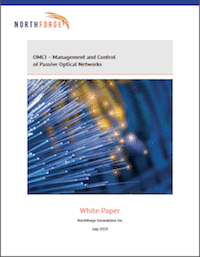
Providing Internet access over fiber is generally accepted to be the best approach since it’s more secure, more robust, and can carry data much farther and much faster than copper.
Passive Optical Networks (PONs) are the predominant technology for providing Fiber to the Premises (Fiber to the Home, FTTH, and Fiber to Business, FTTB). PON allows a single fiber connection from the Central Office to service multiple subscribers (32, 64, 128) by passively splitting the optical signal in the field. By “passively splitting” we mean that it does not require electronics to perform the signal splitting, it is all done with optical components (filters and mirrors). This makes the solution less expensive to operate and maintain.
The ONU is the Customer Premises Equipment (CPE), i.e., the device that the Service Provider places at the Subscriber’s site to terminate that side of the fiber connection. This solution is broadly deployed around the world to provide high speed Internet access to homes and businesses. In fact, many service providers are starting to decommission their copper networks as their fiber penetration increases.
If an OMCI implementation is required for an ONU product, the first decision is which base implementation to use. A proprietary implementation, an open source implementation, or of course, there is always the DIY (do it yourself) implementation (although these are increasingly rare). As with all software implementations of network protocols (and most other things) there is always a long list of issues and considerations that go into the choice of an implementation base. (Obviously, several of these depend on a sufficient hardware platform).
As with all software implementations of network protocols (and most other things) there is always a long list of issues and considerations that go into the choice of an implementation base. (Obviously, several of these depend on a sufficient hardware platform).
This white paper covers these considerations:
- Performance
- Scalability
- Protocol capabilities
- Breadth of support

